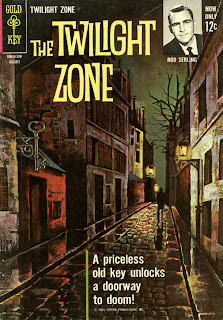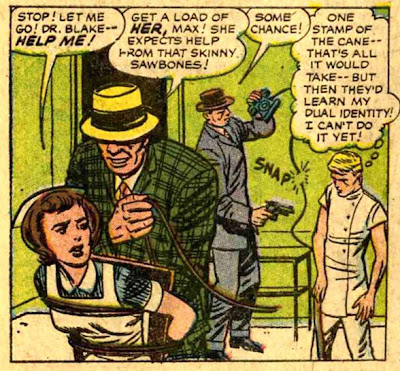Full list of the 100 best works of fiction, alphabetically by author, as determined from a vote by 100 noted writers from 54 countries as released by the Norwegian Book Clubs.
Don Quixote was named as the top book in history but otherwise no ranking was provided.
Albert Camus, France, (1913-1960),
The StrangerAlfred Doblin, Germany, (1878-1957),
Berlin AlexanderplatzAnton P Chekhov, Russia, (1860-1904),
Selected StoriesAstrid Lindgren, Sweden, (1907-2002),
Pippi LongstockingCharles Dickens, England, (1812-1870),
Great ExpectationsChinua Achebe, Nigeria, (b. 1930),
Things Fall ApartDante Alighieri, Italy, (1265-1321),
The Divine ComedyDenis Diderot, France, (1713-1784),
Jacques the Fatalist and His Master
DH Lawrence, England, (1885-1930),
Sons and Lovers
Doris Lessing, England, (b.1919),
The Golden Notebook
Edgar Allan Poe, United States, (1809-1849),
The Complete Tales
Elsa Morante, Italy, (1918-1985),
History
Emily Bronte, England, (1818-1848),
Wuthering Heights
Ernest Hemingway, United States, (1899-1961),
The Old Man and the Sea
Euripides, Greece, (c 480-406 BC),
Medea
Federico Garcia Lorca, Spain, (1898-1936),
Gypsy Ballads
Fernando Pessoa, Portugal, (1888-1935),
The Book of Disquiet
Francois Rabelais, France, (1495-1553),
Gargantua and Pantagruel
Franz Kafka, Bohemia, (1883-1924),
The Complete Stories;
The Trial;
The Castle Bohemia
Fyodor M Dostoyevsky, Russia, (1821-1881),
Crime and Punishment;
The Idiot;
The Possessed;
The Brothers Karamazov
Gabriel Garcia Marquez. Colombia, (b. 1928),
One Hundred Years of Solitude;
Love in the Time of Cholera
Geoffrey Chaucer, England, (1340-1400),
Canterbury Tales
George Eliot, England, (1819-1880),
Middlemarch
George Orwell, England, (1903-1950),
1984
Giacomo Leopardi, Italy, (1798-1837),
Complete Poems
Gilgamesh, Mesopotamia (c 1800 BC).
Giovanni Boccaccio, Italy, (1313-1375),
Decameron
Gunter Grass, Germany, (b.1927),
The Tin Drum
Gustave Flaubert, France, (1821-1880),
Madame Bovary;
A Sentimental Education
Halldor K Laxness, Iceland, (1902-1998),
Independent People
Hans Christian Andersen, Denmark, (1805-1875),
Fairy Tales and Stories
Henrik Ibsen, Norway (1828-1906),
A Doll's House
Herman Melville, United States, (1819-1891),
Moby Dick
Homer, Greece, (c 700 BC),
The Iliad and
The Odyssey
Honore de Balzac, France, (1799-1850),
Old Goriot
Italo Svevo, Italy, (1861-1928),
Confessions of Zeno
Jalal ad-din Rumi, Afghanistan, (1207-1273),
Mathnawi
James Joyce, Ireland, (1882-1941),
Ulysses
Jane Austen, England, (1775-1817),
Pride and Prejudice
Joao Guimaraes Rosa, Brazil, (1880-1967),
The Devil to Pay in the Backlands
Johann Wolfgang von Goethe, Germany, (1749-1832),
Faust (English) (German)
Jonathan Swift, Ireland, (1667-1745),
Gulliver's Travels
Jorge Luis Borges, Argentina, (1899-1986),
Collected Fictions
Jose Saramago, Portugal, (b. 1922),
Blindness
Joseph Conrad, England,(1857-1924),
Nostromo
Juan Rulfo, Mexico, (1918-1986),
Pedro Paramo
Kalidasa, India, (c. 400),
The Recognition of Sakuntala (Abhijnanasakuntalam)
Knut Hamsun, Norway, (1859-1952),
Hunger (English) (Hebrew)
Laurence Sterne, Ireland, (1713-1768),
The Life and Opinions of Tristram Shandy
Leo Tolstoy, Russia, (1828-1910),
War and Peace;
Anna Karenina;
The Death of Ivan Ilyich and Other Stories
Louis-Ferdinand Celine, France, (1894-1961),
Journey to the End of the Night
Lu Xun, China, (1881-1936),
Diary of a Madman and Other Stories
Mahabharata, India, (c 500 BC).
Marcel Proust, France, (1871-1922),
Remembrance of Things Past
Marguerite Yourcenar, France, (1903-1987),
Memoirs of Hadrian
Mark Twain, United States, (1835-1910),
The Adventures of Huckleberry Finn
Michel de Montaigne, France, (1533-1592),
Essays
Miguel de Cervantes Saavedra, Spain, (1547-1616),
Don Quixote
Naguib Mahfouz, Egypt, (b. 1911),
Children of Gebelawi
Nikolai Gogol, Russia, (1809-1852),
Dead Souls
Nikos Kazantzakis, Greece, (1883-1957),
Zorba the Greek
Njaals Saga, Iceland, (c 1300).
Ovid, Italy, (c 43 BC),
Metamorphoses
Paul Celan, Romania/France, (1920-1970),
Poems
Ralph Ellison, United States, (1914-1994),
Invisible Man
Robert Musil, Austria, (1880-1942),
The Man Without Qualities
Salman Rushdie, India/Britain, (b. 1947),
Midnight's Children
Samuel Beckett, Ireland, (1906-1989), Trilogy:
Molloy,
Malone Dies,
The Unnamable
Sheikh Musharrif ud-din Sadi, Iran, (c 1200-1292),
The Orchard
Shikibu Murasaki, Japan, (N/A),
The Tale of Genji Genji
Sophocles, Greece, (496-406 BC),
Oedipus the King
Stendhal, France, (1783-1842),
The Red and the Black
Tayeb Salih, Sudan, (b. 1929),
Season of Migration to the North
The Book of Job, Israel. (600-400 BC).
Thomas Mann, Germany, (1875-1955),
Buddenbrook;
The Magic Mountain
Thousand and One Nights, India/Iran/Iraq/Egypt, (700-1500).
Toni Morrison, United States, (b. 1931),
Beloved
Valmiki, India, (c 300 BC),
Ramayana (online-link)
Virgil, Italy, (70-19 BC),
The Aeneid
Virginia Woolf, England, (1882-1941),
Mrs. Dalloway;
To the Lighthouse
Vladimir Nabokov, Russia/United States, (1899-1977),
Lolita
Walt Whitman, United States, (1819-1892),
Leaves of Grass
William Faulkner, United States, (1897-1962),
Absalom, Absalom!;
The Sound and the Fury
William Shakespeare, England, (1564-1616),
Hamlet;
King Lear;
Othello
Yasunari Kawabata, Japan, (1899-1972),
The Sound of the Mountain
 He also drew a strip I like, the Kirby-styled "Black Knight" feature from Marvel Super-Heroes #17 in 1968. He received credit for this one.
He also drew a strip I like, the Kirby-styled "Black Knight" feature from Marvel Super-Heroes #17 in 1968. He received credit for this one. Purcell was a comic book journeymen who labored over a drawing board for many years and drew a lot of features. This is one of his back-up "Johnny Peril" strips for All-Star Comics. This particular episode appeared in #45, February-March 1949. The art is moody and effective, and the story, a variation on Aladdin's lamp from The Arabian Nights, sent me into a fantasy world for awhile. What would I wish for if I had a genie? Hey, I'm not greedy. For starters, I think 10 mint copies of Action Comics #1, which I'd auction off, one a year.
Purcell was a comic book journeymen who labored over a drawing board for many years and drew a lot of features. This is one of his back-up "Johnny Peril" strips for All-Star Comics. This particular episode appeared in #45, February-March 1949. The art is moody and effective, and the story, a variation on Aladdin's lamp from The Arabian Nights, sent me into a fantasy world for awhile. What would I wish for if I had a genie? Hey, I'm not greedy. For starters, I think 10 mint copies of Action Comics #1, which I'd auction off, one a year.


+001.jpg)
+011.jpg)
+017.jpg)
















007.jpg)












